
Standards, competence, top cover, tourniquet conversion & the importance of context.
- Remote Area Risk International
- Feb 22
- 6 min read
Updated: 2 days ago
Feb 22. 2025.
This article is from a civilian remote medic/fieldwork/expedition/nuanced perspective but may have wider application. We’re putting it up now for currency and value of message speed. Might get refined over the next week or so for posterity/ added links etc.
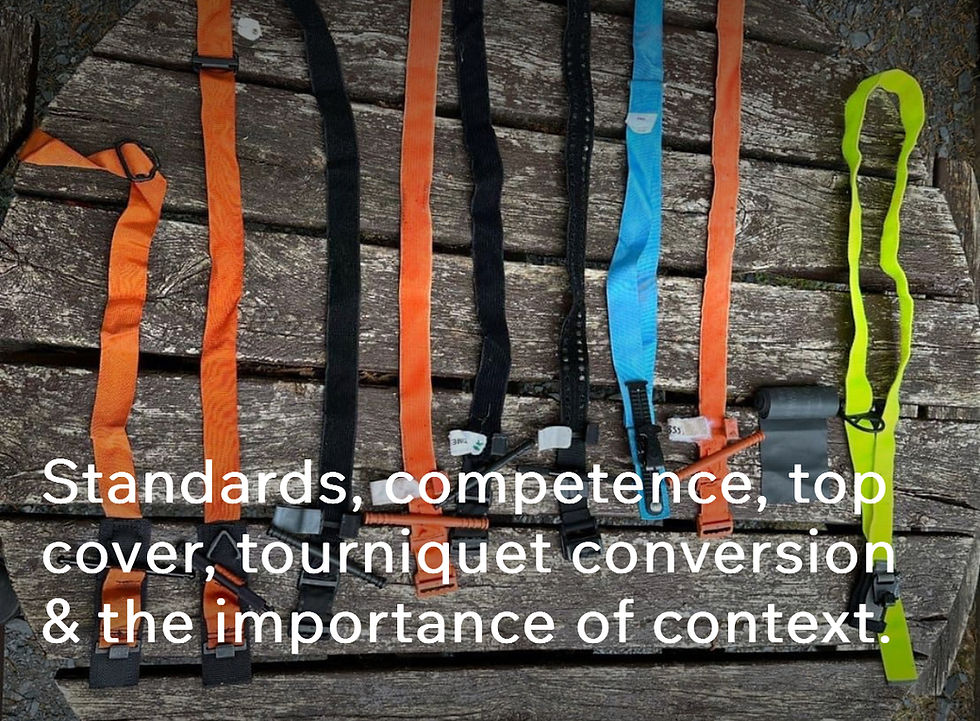
An interesting recent article (below) from Australia. It follows/is relevant to a number of themes we’ve been highlighting for some time.
We posted about it on Facebook a couple of days ago - now for a wider share. It’s definitely worth sharing more widely - to raise awareness of tourniquet conversion & the Stepwise Approach to Catastrophic Haemorrhage. These are well known concepts but it’s useful (and necessary) to promote wider awareness in the civilian remote area medical sector…including amongst health care professionals, top cover (noting that most expedition and fieldwork organisations do not deploy regulated health care professionals - instead using first aiders - sometimes advanced first aiders - (we’ve expressed our view in this very vocally over the years - level of medical cover should be driven by the risk assessment) and, importantly, remote medical educators/practitioners).
The solution: Suitably trained, practiced, current responders (whether medics or non medics) , trained by suitably trained, practiced, current, competent instructors and all supported by suitably trained, current, competent top cover (as stipulated in relevant remote, exped, fieldwork safety standards).

The article above is in tactical context, for advanced practitioners. However, it also contains links to other, recent, highly relevant/related topics - all authored by the same author - an Orthopod in the Australian Military.
Links include to articles on : fundamental guides to TQ escalation, TQ de escalation drills, TQ conversion in Prolonged Field Care and many more.
Should be good CPD reads on the subject.
Read this ⬇️
⬇️⬇️⬇️⬇️⬇️⬇️⬇️⬇️⬇️⬇️⬇️⬇️⬇️⬇️⬇️⬇️⬇️
⬆️⬆️⬆️⬆️⬆️⬆️⬆️⬆️⬆️⬆️⬆️⬆️⬆️⬆️⬆️⬆️⬆️
Here’s a link to a piece we wrote last August on the subject:
The impact of tourniquets (lifesaving kit) is very well and very widely known. The risks of damage that arise from tourniquet use are also very well known and very longstanding. Better alive than not, but appropriate training and use will limit unnecessary TQ use and potential limb damage/loss.
Unnecessary amputations (caused by either inappropriate training or failure to follow appropriate training - the article doesn’t say which), in Ukraine, has been the subject of studies:

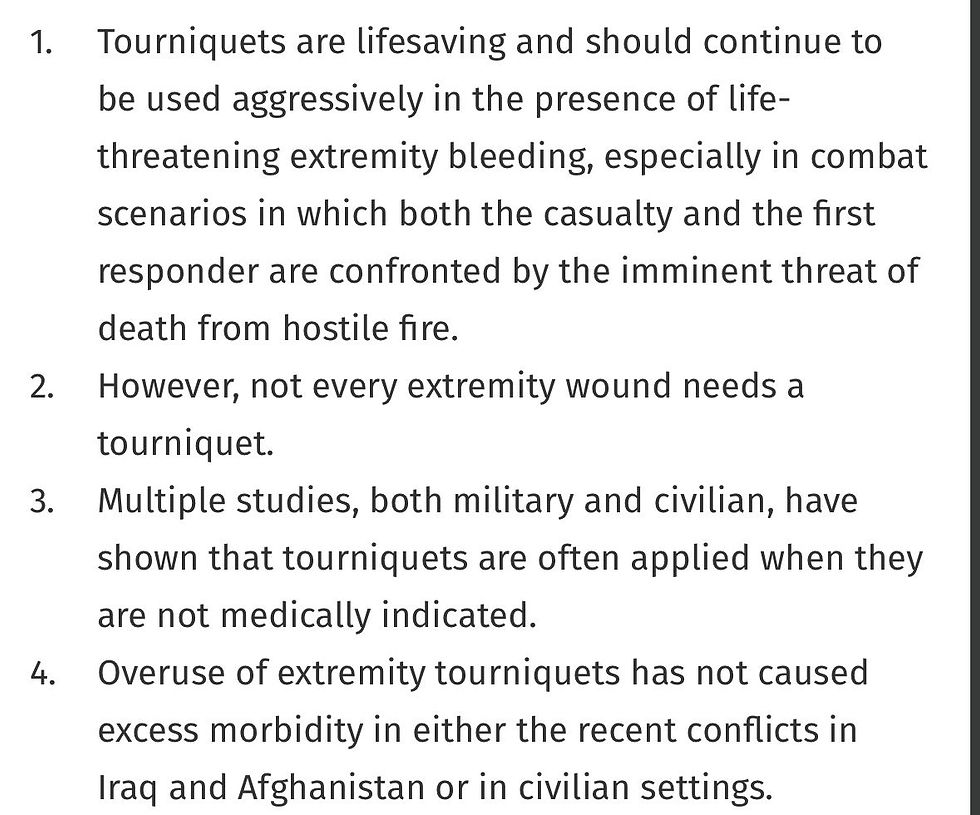

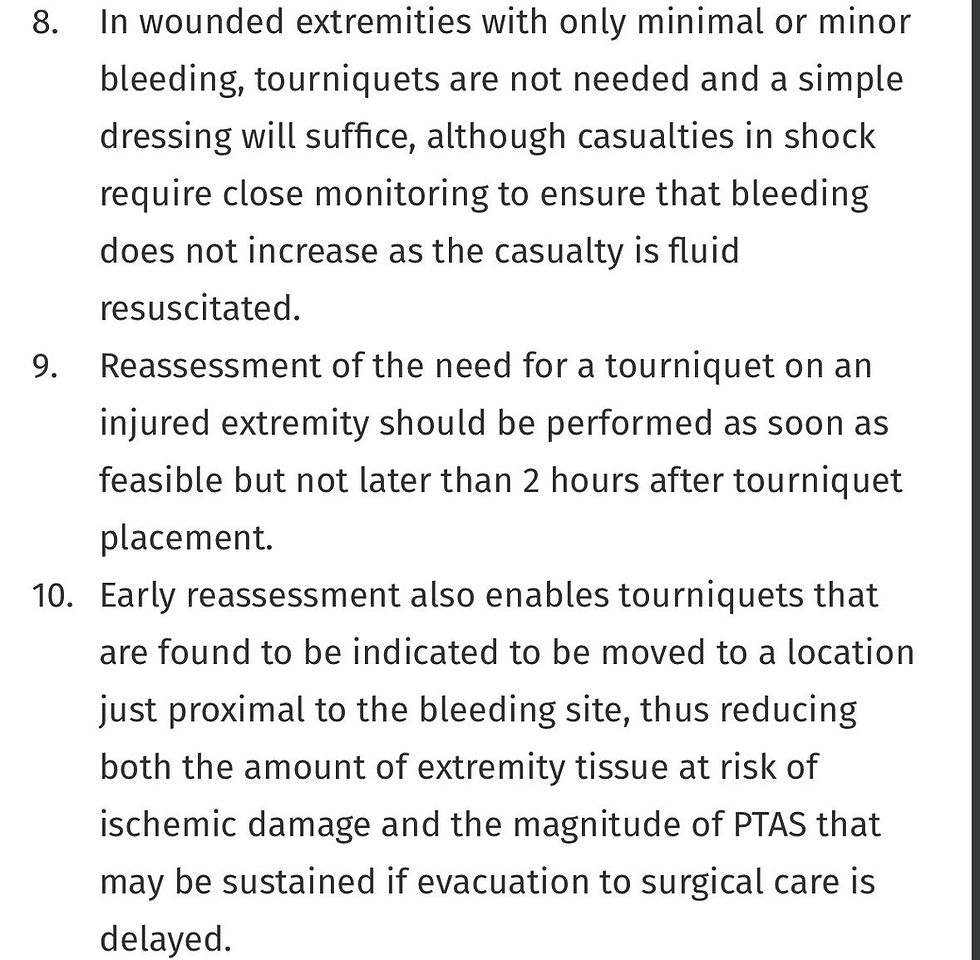

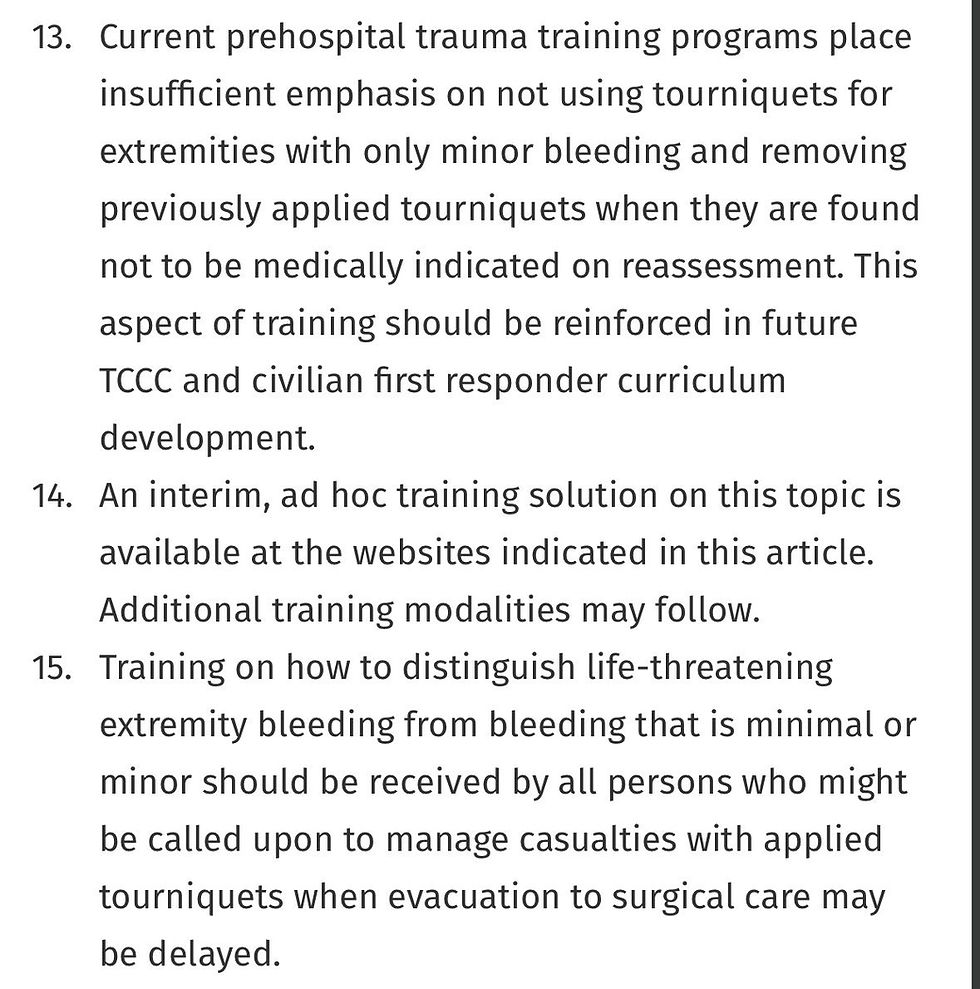
However well known, it’s always worth circulating more widely - including for those Doctors, Nurses, Paramedics who may be providing ‘top cover’ by way of telemedicine - to support those with lower levels of training but may be the only trained first aider in the field. Worth circulating further because there have been several cases in the last 12 months or so where comments have featured in international wilderness articles/posts/online that have at least ‘appeared’ to miss/not include/appreciate the nuances of remote considerations and have referenced absolutes that tourniquets should only be removed in hospital/should remain on until hospital.
These comments have been politely corrected, directly or indirectly, by those in the community, which is a useful education tool in itself. Collaboration, support, respectful discourse and sharing knowledge is what the sector should be all about.
Context is always important.
We’ve had several Faculty discussions about this.
It continues the theme of ensuring competence of both top cover medics and those delivering training - to be competent in the context of the activity/duration/environment/group and more.
For those who’ve attended our risk management courses, you’ll be VERY familiar with the phrases ‘First of all, establish the context/context is everything.’
This mirrors ISO: 31000 - Risk Management.
Fit for purpose training covers these issues.
The Pre Hospital Trauma Life Support course has covered the stepwise approach/ ladder for cat haem management, including tourniquet over multiple editions. We’ve run this training for the best part of a decade, at our International Centre for Remote Area Medicine, at the National Putdoor Centre, in a uniquely remote area context. Our alumni operate across the Globe, on every continent, every environment.
Our Faculty of medics and also our first responders have taught tourniquet use for more years than we care to mention.
Similarly, we cover cat haem management, tourniquet use and conversion on both our Remote Medical Responder : A Wilderness First Responder course - for non healthcare professionals, with supportive resources provided and our PHTLS & R/EMO:TE Medic programmes.
‘Civilians working in extremely rural or wilderness environments with transport times that exceed the 2 h from the time of injury to hospital may consider implementing a procedure for tourniquet conversion into their clinical guidelines.’ ;
How to Convert:



When to convert?;

Who should do conversion ? Up to 2 hours = anyone suitably trained:
For discussion: Possible Tourniquet Conversion Mnemonic at Non Medic level (eg WFR)
Do it right or it’s BANNED ETC;
B- Before 2 hours (convert)
A - Able to Monitor Wound
N - Not in shock
N - No Traumatic Amputation being managed
E - Evacuation won’t reach ➡️
D* - Definitive care for at least 2 hours after injury
E - Early
T - Top
C - Cover
Definitive care - higher level of medical care, competent and equipped to convert after 2 hours.
Possible Mnemonic for medics :
Medic Level
T - Top Cover;
E - Early : convert before 2 hours: optimal
N - Not in Shock
D - Definitive care is more than 2 + hours after injury
E - Effective monitoring of wound possible
N - No traumatic amputation being managed
C - Check card - follow it
Y - You are competent and equipped to convert
Pressure, pressure dressings, wound packing using multiple wound packing trainers, haemostatic agents (we always train with live, green packet Celox), when to use a TQ, when not to, longer term considerations, reduction - when to, when not to, how. Plenty of observed scenarios (visually demonstrating what a cat bleed is) and debriefs. Layered learning.
Bullet point take aways :
Buy the real thing from reputable sources. Not off eBay.
Buy proven, tested TQ’s models. This is what we found with all the TQ’s in a batch from Rhino Rescue:
Use tourniquets when they are actually needed.
Don’t use them when they’re not.
They can save lives.
Be aware and understand application duration v impact.
Not later than 2 hours and beyond 6 hours are important threshholds in the TQ application chronology/timeline (read the articles to see why)
Understand how and when to assess/ reduce/convert a tourniquet … and when it’s not appropriate to …
Understand the time limits v training level of staff providing the med cover
Assess at not later than 2 hours.
After 2 hours, the medical situation becomes more complex and needs higher level med training/professionals
Consult ‘top cover’ early (obv once life threatening issues addressed in primary and secondary surveys) - but well within 2 hours
Ensure ‘top cover’ is competent in context (see BS8848)
Medical ‘Top cover’ should be by health care professionals competent to advise support for that group/that environment/that activity.
Get training from up to date and subject matter aware/competent instructors. There are lots of organisations delivering good training on this
Make sure the training relates to the context you will use it in
Regular refresher training.
Remote settings have additional considerations.
Staff qualification levels and kit have additional considerations.
Keep up to date.
Don’t assume.
Remote considerations can be different to urban considerations where (relatively) swifter responses and handover to higher echelons of care are to be expected.
Leaving a TQ to ‘only be removed in hospital’ in a longer term context could be very problematic as an absolute rule - and with very unfortunate and unnecessary consequences- it could cost limbs. Instead, think about the time scales and understand what consequences can flow from not checking whether it’s appropriate/possible to convert. Upgrade your training if you are operating in a remote setting but have to date received urban specific training, with guaranteed short transfer times. 🦄

Use ‘top cover’. It should be standard for any expedition company. Most exped companies do not deploy registered health care professionals. It’s covered on our courses (and the standards evidencing this as good practice).
Even small companies we work with have commercial, doctor led top cover in place.

When it all goes wrong and the adrenaline is running, having a competent, friendly voice to talk things through with, once you’ve done the life saving interventions and group management, is not only a boon, it’s good practice. Read BS:8848. The British Standard for Safety on Overseas expeditions, fieldwork, visits and adventure travel. It’s been waved round in courtrooms from (at least) UK to U.S. to Australia as good practice including in a recent expedition related criminal conviction in Australia.
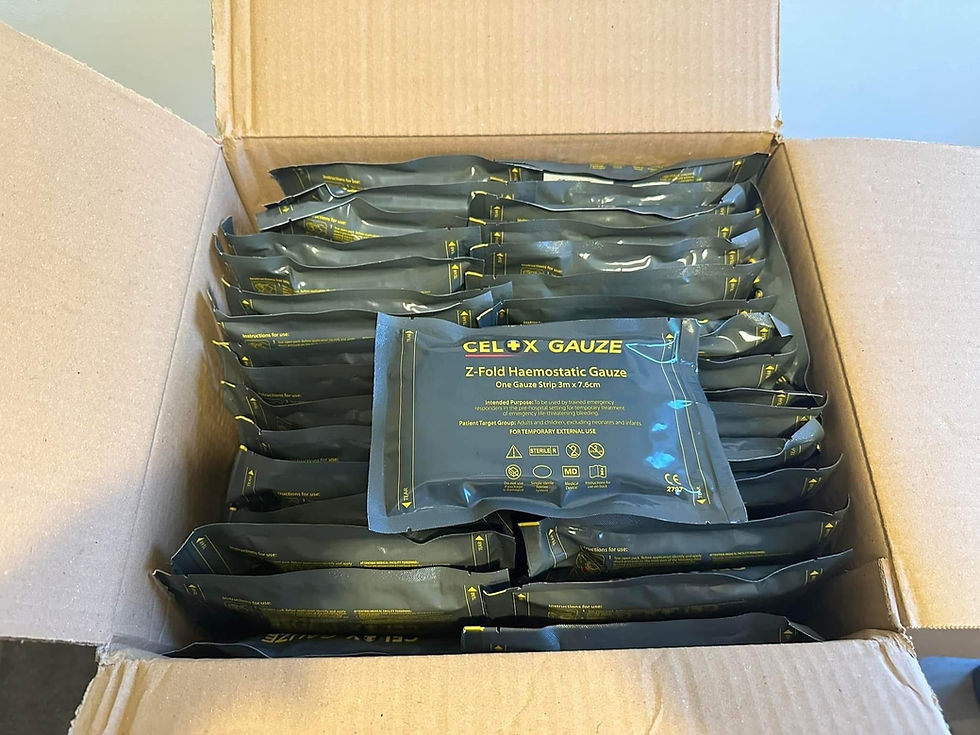
Conflict statement: one of our Directors was and remains on the BS:8848 Committee and has sat on that committee since its inception in circa 2004 (?).
Qualified, current, experienced.
Prevent | Respond | Rescue | Resolve | Evacuate™️
#iso31030 #remoteareasafety #remotearearisk #expedition #adventuretravel #expeditionmedic #riskassessment #IRARAM Plas y Brenin Wilderness Medical Society Adventure Medic College of Paramedics Royal Geographical Society (with IBG) Mountain Training Student Wilderness Medicine UK Mountain Training Association Celox Medical




Comments